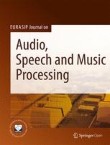Convolutional neural networks for the classification of guitar effects and extraction of the parameter settings of single and multi-guitar effects from instrument mixes
Guitar effects are commonly used in popular music to shape the guitar sound to fit specific genres, or to create more variety within musical compositions. The sound not only is determined by the choice of the ...
